The paperless life: How I (and China) learned a new way to spend money
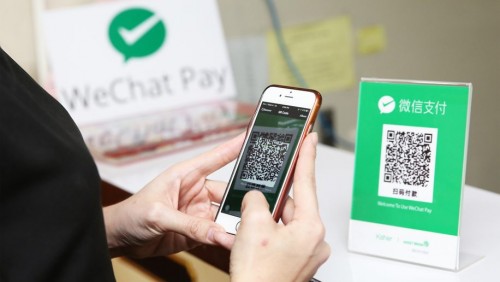
If you’ve been following news on China recently, you might have read many of the articles that have been popping up about the country’s transition toward a nearly ubiquitous mobile payment system. Despite how pervasive it is here in Beijing and in other high-tier cities, it’s definitely a phenomenon contained within China’s borders, and readers outside the country might have a hard time appreciating the extent that apps such as Wechat Pay and Alipay have changed Chinese spending and shopping habits.
But when an outsider like myself entered this economy with no prior knowledge of its inner workings, it quickly became apparent to me that navigating the country with just a credit card or a stack of 100 RMB notes was inconvenient and old fashioned. Everyone, and I mean absolutely everyone, was a proponent of mobile payment and QR code scanning, even this beggar on the street.
And why shouldn’t they be? I quickly realized within my first week in Beijing that almost anything under the sun could be purchased with little more than a few swipes on a phone app. It’s a little hard to conceptualize, so I spent a day documenting just exactly what I purchased and how I did it all with nothing more than my phone:
Saturday, 9:45 AM, a 7/11 in Beijing:
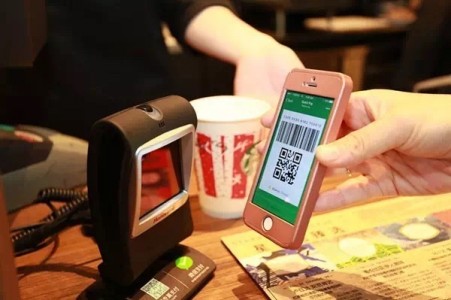
The usual chorus of “欢迎光临” greets me as I push open the doors and the bright fluorescent lights of the convenience store flood my vision. I smile at the cashiers behind the counter before beelining for the bread aisle in the back. With the practiced precision of someone who has bought the exact same three items far too many times (I’m not very adventurous in the breakfast department), I scoop up the two buns in their separate packaging, nab a bottle of iced tea from the cooler, and set them down at the register. Taking out my phone, I open up my Wechat app to my personalized barcode and swipe it under the scanner at the register. I tap once to affirm that yes, I do want to pay for my guilty pleasures with my Bank of China account balance, and tap again to verify the purchase with my thumb print. Within a matter of seconds, the transaction is over and I’m free to go with no hassle whatsoever. I leave the 7/11 less than two minutes after entering it.
10:13 AM, The streets:
Trudging along the streets, I pass row upon row of identical bikes propped up against one another. I’ve never felt much of a need to acquire the skill while in the states, but here in China the sheer convenience of what I’m missing out on couldn’t be more clearly shoved in my face.
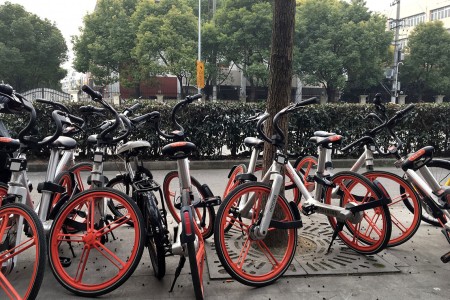
If you can ride a bike, getting around Beijing and most other major cities even without relying on public transportation is incredibly easy. The sudden surge of bike-sharing companies means that you’re unlikely to walk down any street without seeing bicycles of all sorts. Riding one is as simple as scanning a QR code, hopping on, and pedaling off. You don’t even have to dock them at a designated station when you’re done, which explains why there are so many just haphazardly piled up at every corner.
If you unfortunately happen to be like yours truly and your short-lived bike adventures end in nothing more than two dinner plate sized bruises on your inner thighs, you’re stuck using the slightly more inconvenient subway system and bus lines. While some cities like Hangzhou, home of tech giant Alibaba, have mobile pay integrated with the public transportation system, Beijing has yet to make this move. This is perhaps one of the few instances where you’ll have to rely on cash to carry you through.
Of course, if you’re feeling impatient and are willing to pay a little bit more money, you can call a taxi through your payment app too.
4:37 PM, A shopping mall:
Buying gifts is hard, and controlling the urge to splurge is even harder. I realized both these things belatedly as I sat inside a KFC booth with a giant cup of lemonade in front of me and accompanied by a gigantic shopping bag. I rummage through its contents to remind myself what I just spent my money on: A pair of overalls with fake girl scout badges on them that will definitely make my professors wonder why there’s a 12 year old in their class, a hot pink hairdryer, a power adaptor for aforementioned hairdryer, an oversized Mickey Mouse sweater that is still miraculously on the rack in 32 degree Celsius July heat, and a bunch of random cute knick knacks from Miniso.
And if you thought for even a second that one of these items couldn’t be purchased with little more than a scan of my phone, then you haven’t been paying enough attention to this narrative. The only slightly awkward part of mobile payment is the circular conversation you have to have with the cashier about whether they scan your QR code or you scan theirs. Oh, and you might have to contend with those inconvenient moments where you get an important call on Wechat just as you’re about to make your purchase.
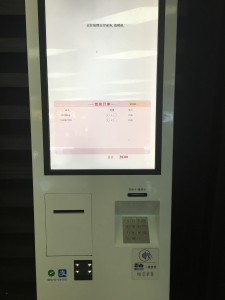
In fact, forget ‘no cash’. These days, China’s even moving toward ‘no cashiers’. While the practice isn’t widespread, there are several places in Beijing, including the KFC I’m currently sitting in, that don’t even require a customer to have any kind of human interaction in order to buy what they want. All I had to do was step up to a machine at the front of the store, punch in my order, scan the automatically generated QR code, take the receipt that the machine spat out, and wait for my food to be delivered at the counter.
And if that isn’t the ultimate blessing for my socially awkward self, then I don’t know what is.
6:52 PM, Home:
I’m currently sprawled out on my bed in a quest to take up as much room as physically possible. There’s a weird sound, and it takes me a moment to realize that I haven’t eaten dinner and my stomach is now waging a war against my eardrums. Being the terribly lazy person that I am, I don’t feel like actually getting up and leaving my room to grab food. So I open up my phone for the thousandth time that day, click on Baidu Waimai, and after 10 minutes of indecisiveness I’m teleported to the checkout screen that directly links to my Wechat account and begins the roughly hour long process of sending dumplings and green tea and whatever else I ordered right to my doorstep.
Again, what are cashiers?
10:44 PM, The Internet:
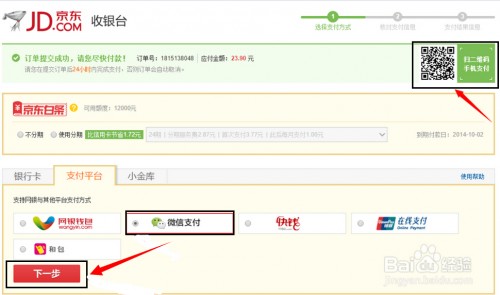
Wechat and Alipay don’t buy just physical goods. As I sit at my desk and scroll through the vast depths of the Chinese internet, I’m met with the possibility of spending my money in 5000 ways. The bottomless pit that is Taobao and its millions of cheaply produced goods always beckons toward me, and I have to tear my eyes away from advertisements every single time. Two days ago I almost bought a VIP pass on QQ so that I could marathon Game of Thrones not because I hadn’t seen enough of Khaleesi and her dragons, but because it would have been so easy to do it.
And if you’re into the wonderful and whacky world of Chinese live streaming aka zhibo (fellow intern Shani tried her hand at it), you can put a bit of a dent into your bank account by mindlessly sending your favorite users stickers that are worth real money. Careful you don’t press that Lamborghini button though. That alone will take you down 100 yuan, and you won’t realize it until it’s too late. (Not saying that I’ve…done that or anything…)
That wraps up a day in mobile payments.
When I first landed in Beijing Capital Airport, I kept asking myself what these mobile payment apps could possibly buy. Within the first week, I realized that I was asking myself the wrong question and the right one ought to be: what can’t mobile payment apps buy? Very little, it seems. The ease and convenience of paying for day to day necessities (and whatever else a person could possibly want) makes living in most major cities incredibly easy, even if you don’t happen to speak the language very well.
So if you ever happen to be in China any time soon, consider switching out your cash and credit cards in exchange for an app on your phone. And if you have any good stories or experiences to tell about navigating paperless in China, feel free to comment below!
As for yours truly, my time in this digitalized economy will be ending soon. I’ll be sad to leave, but at least my wallet will thank me for it.